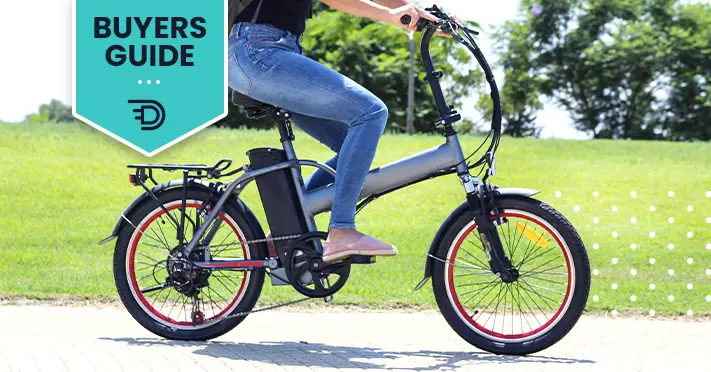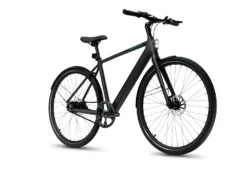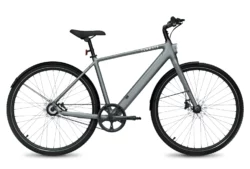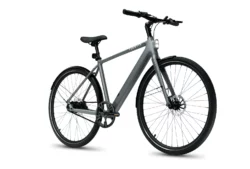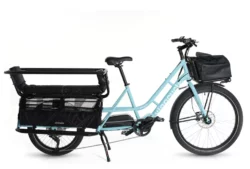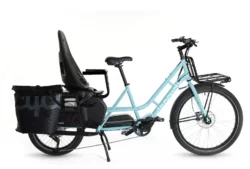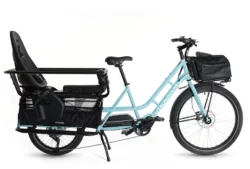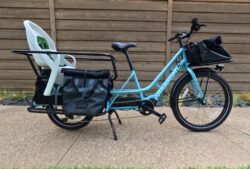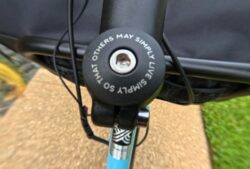An electric bike is way cheaper than a car, environmentally friendly, and safely gets you from point A to point B. With help from the e-bike’s motor, you won’t get tired and can enjoy a more comfortable ride.
Plus, e-bikes are versatile. You can use them for everything from commuting to work to trekking unpaved mountain trails.
The key is to get the right type of e-bike for your intended purpose. Electric bicycles can suit all needs, from road racing to off-roading. Learning about the different e-bike types can help ensure you get the right model for your needs.
In this guide, we cover the most popular types of e-bikes and reveal what to consider when purchasing your first e-bike.
What Are the Different Types of E-Bikes?
All e-bikes aren’t created equal. Different bikes are designed with different purposes in mind. Here are the most common types of e-bikes and what they’re used for.
City Bikes
City bikes are used for urban cycling, primarily on paved surfaces like bike lanes and roadways. Common characteristics of city bikes include:
- Step-through frame, which allows the cyclist to mount and dismount the bike by stepping into it. The alternative is a high-step or step-over frame, which requires you to swing your leg over the rear wheel and seat.
- Handlebars that accommodate an upright riding position instead of the hunched-over position seen with road racers (reducing wind resistance and enhancing speed).
- Safety and comfort features like fenders, headlights, rear lights, and racks.
This style is for you if you want a straightforward bike for comfortable city riding. However, if you want something that will get you zipping around the city quickly, a commuter bike might be the better pick — more on that next.
Commuter Bikes
Commuter bikes are meant for everyday use in urban spaces — specifically for commuting (for example, to and from work or school).
Unlike city bikes, which are meant for more leisurely riding, commuter bikes are made to get to a destination quickly. They’re all about speed and efficiency.
Commuter bikes shouldn’t be confused with road bikes. Common characteristics that set commuter bikes apart are:
- Upright riding position: Unlike road bikes, commuter bikes encourage an upright riding position.
- Flat handlebars instead of drop handlebars (like road bikes).
- Wide saddle: Commuter bikes also have a wider saddle than a road bike.
- Sturdy tires: Commuter bikes have heavier, wider tires (road bikes have super-skinny tires to reduce friction with the road and boost speed).
- Suspension system: Commuter bikes have suspension to reduce shock. Again, this sets them apart from electric road bikes, which have spare, lightweight frames and rarely include a suspension system.
This bike is for you if you want a fast, reliable source of transportation that gets you from point A to point B. What if you don’t want to ride on city streets but prefer to go off-road? A mountain bike is the answer.
Mountain Bikes
Mountain bikes are designed for off-road use. They accommodate unpaved surfaces and can ride on different terrains, from gravel to dirt, sand, and snow. Common characteristics of mountain bikes include:
- Advanced gearing systems: Mountain bikes are also designed with inclines in mind and may include features like advanced gearing systems that help cyclists tackle hilly terrain.
- Wide tires: To cope with rugged terrain, mountain bikes have sturdy frames and wide tires. The wider tires offer more stability on uneven surfaces and improve grip to reduce the risk of slipping.
- Full suspension: Mountain bikes also typically have a full suspension system to minimize the shock you feel when going over bumps and jumps.
Electric mountain bikes (e-MTBs) are becoming especially popular thanks to the electric assistance they give cyclists.
With a pedal assist system (PAS) or throttle assist, you can get help propelling the bike forward. For challenging terrains, like hills, this keeps you from getting tired and improves endurance.
If you dream of exploring nature trails and scaling steep hills on two wheels, a mountain bike is an obvious pick. If you want to ride even farther and faster, consider an e-MTB.
Folding Bikes
Electric bikes tend to be more robust than regular bikes because the frame needs to accommodate a motor and battery. For reference, a normal bike weighs about 10 pounds (22 kilograms), while an e-bike weighs about 44 to 55 pounds (20 to 25 kilograms).
A folding e-bike is right if you want something more compact and portable. These models have smaller, more lightweight frames. They can be folded for easy carrying, making traveling and storage simpler.
It’s also a great choice for commuters who combine cycling with other modes of transport, like a bus or subway. You can ride your bike part of the way and fold it to bring onto public transportation.
Factors To Consider When Buying an Electric Bike
The first step to buying an e-bike is determining which styles are right for you. Beyond that, these are some of the most important factors to consider when purchasing an e-bike.
Motor and Battery
The e-bike motor sets an electric bike apart from a normal bike. It can provide two types of electric assistance: pedal assist and throttle assist.
A pedal assist system (PAS) helps amplify your pedal power, while throttle assist moves the bike forward even when you aren’t pedaling.
Most bikes provide varied assistance levels — for example, a five-level PAS can provide max support at level five and minimal support at level one.
While all e-bikes have a PAS, not all e-bikes have throttle assist.
Electric bike motors function in different ways. The most common types of motors are mid-drive motors and hub motors:
- Hub-drive motors are set at the front or rear wheel — a front hub or rear hub motor, respectively.
- Mid-drive motors are set between the rear and front wheels. Thanks to their location, mid-drive motors allow for a lower center of gravity, improving stability. For this reason, mid-drive motors are usually preferred (and pricier).
Motor power can also vary. The more wattage a motor has, the more powerful it is. E-bike motors generally range from 250 to 750 watts, although some have motors of 1,000 watts and up. Higher-watt motors are more powerful, but they’re also heavier.
A rechargeable battery powers the motor. E-bike battery capacity is also a consideration because it impacts the e-bike’s battery range — how far you can ride before recharging.
While a bigger battery usually has a bigger capacity and longer battery life, it will also be heavier, reducing range.
Frame and Suspension
Bike frame design depends on the type of bike. For example, an e-MTB has a more robust frame than a commuter bike. However, there are also different frame styles.
The main distinction is step-through (sometimes written “step-thru”) versus high-step frames (sometimes called step-over frames).
- Step-through frames let you step right into the frame to sit on the saddle. With a high-step frame, you have to swing your leg over the seat and rear wheel to hop on.
- High-step frames have an extra frame tube running from the front of the bike, below the head tube, to the back wheel. Because of this extra tube, which gives the front of the frame a triangular or diamond shape, it’s impossible to “step into” the bike.
The right frame for you is largely a matter of purpose and preference. For example, a high-step frame is inconvenient for frequent mounting and dismounting and can be difficult for people with mobility issues, like the elderly.
In addition to the frame, consider the bike’s suspension. A bike with only front or rear suspension will give you a bumpier ride than a full-suspension system. Again, it’s all about what you’re using your bike for. If you’re planning off-road adventures, we recommend a full-suspension bike. If not, it’s less of an issue.
Brakes and Gears
The brakes allow you to make fast stops, reducing the risk of collisions. The most popular are mechanical and hydraulic disc brakes:
- Hydraulic disc brakes offer greater stopping power
- Mechanical disc brakes don’t offer the same sharp stops but they still get the job done — plus, they cost less than hydraulic disc brakes
While disc brakes allow you to stop, the e-bike gears let you adjust the bike’s assist levels, making pedaling easier or harder.
Gearing systems include derailleur gears, hub gears, and single-speed gears. Hub gears are less maintenance but are more costly and weigh more.
Consider your riding style when selecting brakes and gearing systems.
If you’re an aggressive rider who goes fast, you need top-quality brakes that can come to quick, clean stops. If you’re a more leisurely rider, this isn’t as relevant.
Similarly, if you mostly ride on flat surfaces, you don’t need a super-advanced gearing system with many levels. However, gearing becomes more important if you’re constantly cycling up hills.
Price
Budget is a clear factor when making a big-ticket purchase like an e-bike. Rest assured, there are bikes to suit the size of your wallet.
You can get a basic commuter e-bike for as little as $1,000. That said, high-end e-bikes can cost $10,000 or more.
We recommend a more conservative cost if you’re getting into e-biking. You can test out cycling and see if it’s for you.
It’s always possible to upgrade to a more expensive model later. You don’t want to spend big bucks on a fancy bike, only never to use it.
The warranty is also a consideration when it comes to cost. A reputable manufacturer that offers a top-tier warranty may save you a lot on repair costs. It can also bring peace of mind, as you know your e-bike investment is better protected.
Maintenance and Repairs
After you get your e-bike, you’ll have to put in some effort to maintain it. For example, it’s important to clean it regularly, check the tire pressure, and lubricate the bike chain.
However, even with upkeep, your e-bike may experience technical issues. For example, the bike chain may break, or a tire may get punctured.
You can address some issues. In other cases, you may need help from a professional bike shop with the necessary tools and expertise.
When buying an e-bike, consider what resources you have for repairs. Ask yourself:
- Is there a bike shop in your area that deals with e-bikes?
- Will they be able to order the possible replacement parts you need?
- Do they have the expertise to maintain and fix that particular brand?
Addressing this now can save stress later.
Accessories
Once you’ve decided on an e-bike, it’s time to get some accessories. Depending on the bike, it may or may not come with basics like fenders, racks, or lights.
If you have to buy these items separately, factor that into the final purchase price of your bike.
It’s also important to consider accessories because you want to make sure it has the necessary mounting points to support your desired accessories — say, a rear rack or front basket.
You don’t want to buy a bike now only to learn it isn’t compatible with your desired accessories.
What Are Some of the Best Electric Bikes on the Market?
Now that you’ve got an idea of what to look for in an e-bike, the big question remains: Which one should you get? Here’s a sneak peek at just a few of our favorites. We’ve got plenty more reviews on eBikes.org.
QuietKat Jeep Rubicon
Ready to go off-road? The QuietKat Jeep Rubicon has you covered. This fat tire e-bike can go up to 28 miles per hour (mph) thanks to its 1,000-watt motor and powerful 1kWh battery.
It’s also got a great range of 63 miles and charges completely in six hours. With the fat tires and robust frame, you can comfortably ride on all kinds of terrain.
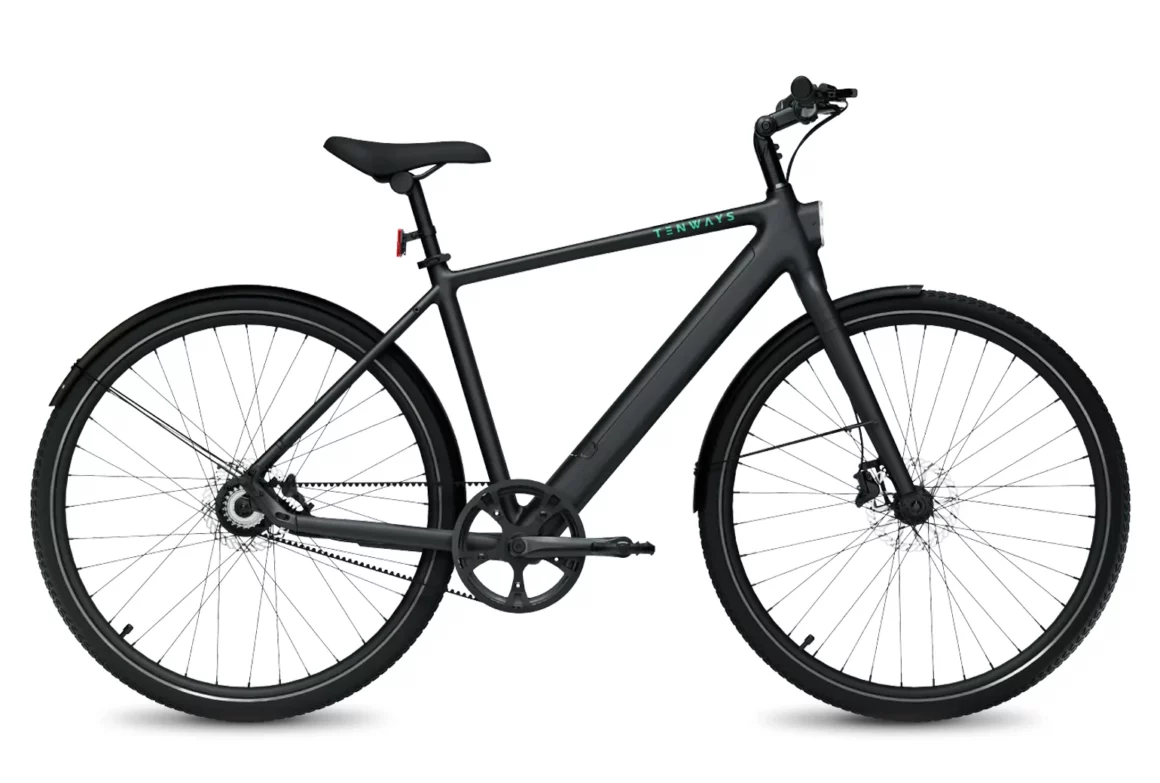
Tenways CGO600 Pro
If you want a sleek, lightweight e-bike that prioritizes a smooth efficient ride, the CGO600 Pro from Tenways is for you. The bike weighs just 35 lbs — for context, compare that to the 75-pound QuietKat Jeep Rubicon!
It has a 52-mile range, a whisper quiet rear hub motor, a Gates CDX belt drive, and integrated weatherproof headlight. This thing was built for your commute.
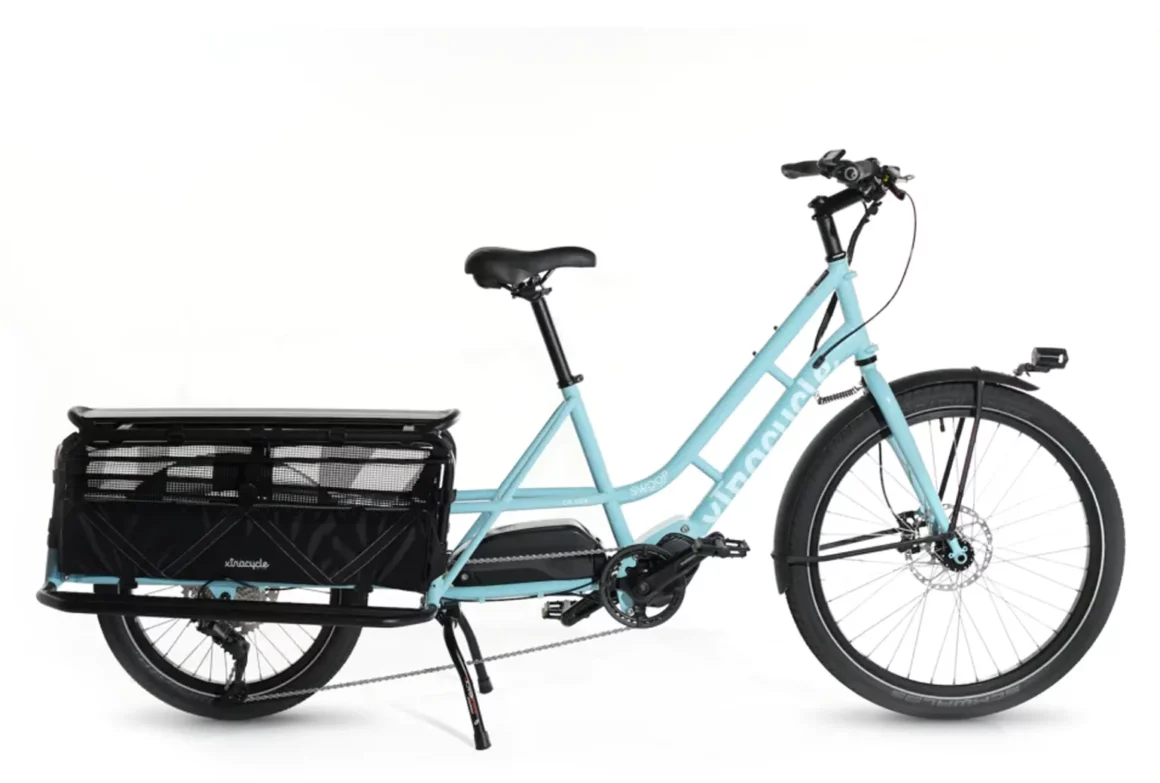
Xtracycle Swoop
The ultra-versatile Swoop from Xtracycle, an e-bike company based out of San Fransisco, is hands-down one of our favorite rides. We love it so much that it has become a daily driver for us. The Swoop can haul over 470 lbs., and the extra long rear rack can be configured a million different ways.
The Swoop is the ultimate family-truckster that is designed to grow with your family. Are your kids all grown up? No problem, strap up the rear rack with a tent, a couple of sleeping bags and hit the road for a long-range adventure. The efficient Shimano EP8 system will make the mile roll by with ease for up to 62 miles per charge.
Discover the Best E-Bike Brands at eBikes.org
An e-bike is a major financial investment, costing anywhere from $1,000 to upward of $10,000, depending on the model, manufacturer, and customization. Our point is: You’re going to spend good money on your e-bike, so you should do your research.
We make it easier with your comprehensive buying guides and honest brand reviews. Whatever type of riding you’re interested in, we’ve got the info you need.
Of course, the best thing you can do to determine if a bike is right for you is to take it out for a test ride — which we always recommend.
Before you get to that point, though, do your research to narrow your options. eBikes.org has you covered.
